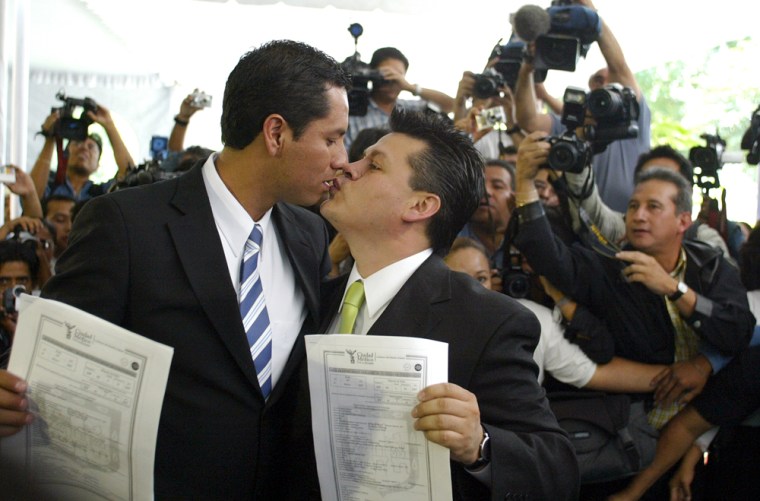Civil unions between male couples existed around 600 years ago in medieval Europe, a historian now says.
Historical evidence, including legal documents and gravesites, can be interpreted as supporting the prevalence of homosexual relationships hundreds of years ago, said Allan Tulchin of Shippensburg University in Pennsylvania.
If accurate, the results indicate socially sanctioned same-sex unions are nothing new, nor were they taboo in the past.
“Western family structures have been much more varied than many people today seem to realize," Tulchin writes in the September issue of the Journal of Modern History. "And Western legal systems have in the past made provisions for a variety of household structures.”
For example, he found legal contracts from late medieval France that referred to the term "affrèrement," roughly translated as brotherment. Similar contracts existed elsewhere in Mediterranean Europe, Tulchin said.
In the contract, the "brothers" pledged to live together sharing "un pain, un vin, et une bourse," (that's French for one bread, one wine and one purse). The "one purse" referred to the idea that all of the couple's goods became joint property. Like marriage contracts, the "brotherments" had to be sworn before a notary and witnesses, Tulchin explained.
The same type of legal contract of the time also could provide the foundation for a variety of non-nuclear households, including arrangements in which two or more biological brothers inherited the family home from their parents and would continue to live together, Tulchin said.
But non-relatives also used the contracts. In cases that involved single, unrelated men, Tulchin argues, these contracts provide “considerable evidence that the affrèrés were using affrèrements to formalize same-sex loving relationships."
The ins-and-outs of the medieval relationships are tricky at best to figure out.
"I suspect that some of these relationships were sexual, while others may not have been," Tulchin said. "It is impossible to prove either way and probably also somewhat irrelevant to understanding their way of thinking. They loved each other, and the community accepted that.”
